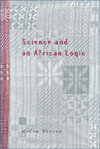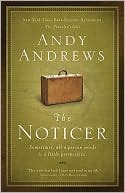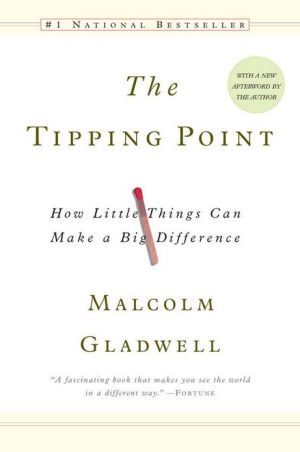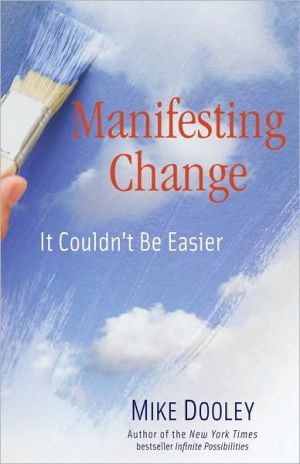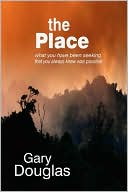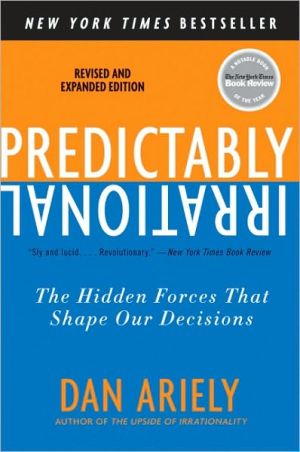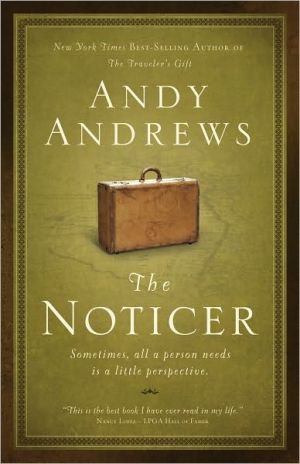Science and an African Logic
Does 2 + 2 = 4? Ask almost anyone and they will unequivocally answer yes. A basic equation such as this seems the very definition of certainty, but is it?\ In this captivating book, Helen Verran addresses precisely that question by looking at how science, mathematics, and logic come to life in Yoruba primary schools. Drawing on her experience as a teacher in Nigeria, Verran describes how she went from the radical conclusion that logic and math are culturally relative, to determining what...
Search in google:
Does 2 + 2 = 4? Ask almost anyone and the answer will be an unequivocal yes. A basic equation such as this seems the very definition of certainty, but how is this so? In this captivating book, Helen Verran addresses precisely that question by looking at how science, mathematics, and logic come to life in Yoruba primary schools. Drawing on her experience as a teacher in Nigeria, Verran describes how she went from the radical conclusion that logic and math are culturally relative, to determining what Westerners find so disconcerting about Yoruba logic and to a new understanding of all generalizing logic. She reveals that in contrast to the one-to-many model found in Western number systems, Yoruba thinking operates by figuring things as wholes and their parts. Quantity is not absolute but always relational. Certainty derives not from abstract logic, but from cultural practice and association. A powerful story of how one woman's investigation into an everyday African situation led to extraordinary conclusions about the nature of numbers, generalization, and certainty, this book will be a signal contribution to philosophy, anthropology of science, and education. Booknews Verran (history and philosophy of science, U. of Melbourne, Australia), while teaching mathematics education to Yoruba teachers in Africa, came to the conclusion that concepts of numbering and logic were profoundly relativistic and culture specific. In following through on the implications of that conviction, however, she came to believe that she needed to find a general theory of logic that would allow educators to help students translate between logics. This book presents her earlier relativistic work alongside later rethinking and critique of that work. After presenting anecdotal examples of the problem, she presents arguments related to the workings of numbers, the generalizing implicit in using numbers, and the certainty that seems to characterize judgments made through numbers. Annotation c. Book News, Inc., Portland, OR (booknews.com)
Science and an African Logic \ \ By Helen Verran \ The University of Chicago Press \ Copyright © 2001 The University of Chicago\ All right reserved.\ ISBN: 978-0-226-85391-8 \ \ \ \ \ Chapter One \ Disconcertment \ Mr. Ojo had a wonderful rapport with children. He relied on this in his teaching, often not bothering to gather much equipment for his science lessons. This morning he had excelled himself in his preparations, yet my heart sank when I saw how he had set himself up to teach the lesson on measuring length. He had assembled about twenty small cards: thick cardboard ten centimeters long and about five centimeters wide, marked off in one-centimeter divisions along the length; one card for each group of two or three children. To go with this, he had twenty lengths of string about two meters long. It was a lesson we had prepared as a group back in the laboratory in the Institute of Education at the University of Ife (now Obafemi Awolowo University). We had begun with one of the "Measuring Ourselves" pamphlets produced by the African Primary Science Program. This program was part of a large and prestigious Western aid program that sponsored curriculum development in science and math with a focus on practical work in many countries in Africa in the 1960s and 1970s. Discussing how the lesson might be modified, so that it would be suitable for a group of fifty or so Yoruba children in classrooms almost devoid of resources, helped students prepare for their practical teaching exercise in the schools around Ile-Ife in southwestern Nigeria.\ Like most of the students at the Institute of Education, Mr. Ojo was around my own age, and a far more experienced teacher than I was. After completing primary schooling, these students had attended teacher-training colleges, a lesser form of Nigerian secondary school, from which they emerged at age seventeen or eighteen to take up positions as primary school teachers. They had held those positions for at least ten years before becoming eligible for two years of retraining at the Obafemi Awolowo University at Ile-Ife, after which they often taught in secondary schools. As a lecturer in the institute, I was responsible for at least part of their "retraining," but my inexperience when it came to Nigerian classrooms meant that this course in science education was, by necessity, very much a two-way program of training. As a group, students and lecturer, we worked out a way of negotiating the curriculum we were developing. The classrooms that these students taught in of necessity entered our negotiations. I taught solely in English; government policy and my meager capacity in Yoruba dictated that. The students too were officially obliged to teach in English in the classroom, but for the most part, and with my encouragement, they used at least some Yoruba in their lessons, engaging in so-called code switching as they felt the need. As part of our group preparation of classroom lessons, we spent time discussing how particular notions might be explained to the children in Yoruba. Necessarily I was silent in these discussions, following the students as best I could.\ The lesson Mr. Ojo was to teach, "Length in Our Bodies," involved children using string to record another child's height, leg length, arm length, and so on, and then a meter ruler to report the length in metric units. In the lab, we had measured each other: use string to represent height, lay the string on the floor and use chalk to record the length, and then, when one of the few meter rulers becomes available, measure the distance between chalk marks and record the measurement in a chart.\ We had also devised a means for evaluating the effectiveness of the lesson: Given a chart with fictitious children's names and heights, and using the process of the lesson in reverse, children would show a particular height, using a length of string to demonstrate whether they had understood. The students were nervous about teaching this way. It meant getting children out of their desks and putting materials other than pencils and exercise books into their hands. It meant children talking to and working with one another instead of working only from the blackboard and speaking only in reply to the teacher. The children were liable to become unruly and noisy at such a departure from the norm, and this could be a serious problem with forty-five to fifty in a small, enclosed space.\ Mr. Ojo had, it seemed to me, taken an easy way out in lesson preparation with his little cards and a chart up on the blackboard. I was not impressed with his little cards, but I was soon forced to change my opinion. Speaking in Yoruba, Mr. Ojo demonstrated the procedure, completely leaving out the neat "lecture" on length that we had collectively prepared back in the institute laboratory. (Under my instruction, we had come up with a little account of length as a quality that things had: length as infinite and so on.) Mr. Ojo called a small boy to the front. Amid the giggles of the boy's classmates, he placed the end of the string just under the boy's heel and, stretching it, held the string at the point that matched the top of the boy's head. Tying a loose knot at this point, he took the other end of the string from under the boy's foot. Holding this at one end of a card, he wound the length of string around until he came to the knot. As the boy retreated and slid down behind his desk, Mr. Ojo instructed: "Count the number of strings around the card. Òkan, èjì, èta, èrin, àrùún, èfà, èje, èjo, èsán [one, two, three, four, five, six, seven, eight, nine]. Write down the number. Multiply by ten. How do we multiply by ten? Àádóràán [ninety]." Then holding the bit of string remaining against the graduations on the card: "mókònléláàádóràán, méjìléláàádóràán, métàléláàádóràán, mérìnléláàádóràán [ninety-one, ninety-two, ninety-three, ninety-four centimeters]. Yes, we have ninety-four centimeters. "Diran's height is ninety-four centimeters." I was scandalized. Mr. Ojo was presenting a bundle of short strands of string, a plurality, as length instead of demonstrating the prescribed singular extension. The notion of extension, said to be essential for children to grasp as the "abstract" element of length, seemed to have been rendered secondary, if not entirely deleted.\ The children set to work in pairs or threes; soon the chart Mr. Ojo had drawn on the blackboard was full of names and numbers. Several children very efficiently used card and string to show how tall the fictitious 'Dupe, Tunde, and 'Bola of our evaluation exercise were. As a pedagogical performance, the lesson could only be judged a complete success. The children obviously had grasped using metric units to express a value. They were pleased with their accomplishment. Mr. Ojo was proud, certain of his success, and so was I. Yet at the same time I was profoundly confused and puzzled. I had glimpsed the lesson as both the same as and different from the one we had prepared, but I was unable to coherently explain how it was either the same or different, or why discerning this mattered. I was disconcerted and felt disempowered in being put out so. However, this was not a power play against the òyinbó (white) lecturer on Mr. Ojo's part. As he saw it, the lesson was a triumph for our group; I was included as one of those who should feel proud at this little success; our lesson had worked well. He was disconcerted by my failure to evince whole-hearted and enthusiastic approval for his lesson.\ Several others of my student group had placements in this school for their practical teaching round. When I went to watch their "length lessons" the next week, they too produced cards and string, adopting Mr. Ojo's technique with minor alterations. Soon all the teachers in my classes were teaching it this way-adopting the technology and using it with or without our little lecture on length. The lessons were routinely successful, and as a group the students swelled with pleasure at the success of their teaching in this new way of putting materials into children's hands. Generously, they ascribed their success to my interventions as they shared their newfound pleasure in teaching with me. As I saw things, the lesson we had devised from the African Primary Science Program cards had been quite transformed, with the demonstration of linear extension compromised in this way of teaching. For the students, it was still the same lesson: children learned to use metric units to measure and took pleasure in their learning.\ The little cards evolved into many forms over the next few months, as they found their way into regular teaching practice. Ten-centimeter strips of tin; regular thirty-centimeter wooden rulers cut into three pieces, the original numbering erased, and numbers 1-10 reinscribed; bamboo pieces; and plywood strips with or without lugs to prevent the wound-up string slipping. For a few weeks, the technology became a craze among the children. String and card could be seen in many pockets. In schoolyards, little knots of children could be seen stretching string, solemnly winding, triumphantly announcing the measurement, and eventually the winner. I came across children at a roadside stall measuring the yams they were selling; one enterprising boy had measured something very long, stringing four measuring cards together. However, the craze did not last long. The little cards disappeared both from the playground and the classroom, and failed to reappear during the teaching practice session the next year. Meter rulers again took up their accustomed place at the center of teaching length.\ What was "out of order" in Mr. Ojo's lesson? Why did I experience this routine as disconcerting? I was aware then, and I still am, that when I try to tell others that something was out of order here, I am likely to be greeted with a shrug of the shoulders, a "So what? Surely it's just the same in the end, isn't it?" Perhaps it is. Yet it seemed this way of numbering had what I felt to be the essence of length almost as an afterthought. Did it matter that some Yoruba teachers had children measuring length beginning in a plurality (a bundle of strands) rather than the unity of extension (a stretch of string)?\ I was quite unable to explain the intense feelings that would well up in me when I watched my students teach measuring length with this little card and its many winds of string. Even now as I write about this episode, remembering my confused feelings of delight and suspicion, failure and success, I am shaking again with a sort of visceral laughter, the same sort of chuckling that often afflicted me as I watched my students teaching lessons like this one. I feel like I "saw" length and numbers, those serious abstract entities by which we organize so much of our modern lives, and "saw through" them at the same time. This double seeing never failed to get me. The numbering was familiar and other at the same time. The reality of number was momentarily realized as contrivance, but, oddly, this recognition of artifice did not seem to detract from its realness. Instead, it brought with it an "intense pleasure-the catching of the breath, the delighted laugh, the stirring of curiosity."\ I experience it also when I see the embroidered Kuna mola (richly decorated appliqué blouses made by Panamanian Kuna women) with its "copy" of the His Master's Voice copyright image set alongside the original in Taussig's Mimesis and Alterity. "Pulling you this way and that, mimesis plays this trick of dancing between the very same and the very different. An impossible but necessary, indeed an everyday affair, mimesis registers both sameness and difference of being like, and of being Other."\ Staying true to this laughter eventually has me coming up with a new account of numbers, supplementing and revealing the familiar, conventional explanations of number. My contention, so passionately held that it motivates my long struggle to write this book, is that this laughter, which can easily turn to a visceral groan, this disconcertment, source of both clear delight and confused misery, must be privileged and nurtured, valued and expanded upon. These fleeting experiences, ephemeral and embodied, are a sure guide in struggling through colonizing pasts, and in generating possibilities for new futures. As a storyteller (a theorist) I treasure these moments, I do not want to explain them away. They are the first clue in my struggle to do useful critique. It is easy to ignore and pass by these moments-part of the problem is their fleeting subtlety-yet it is possible to become acutely sensitized to them. Interruptions, small and large are what we, as theorists, must learn to value and use.\ Developing a useful account of what was happening there in Mr. Ojo's classroom that did not explain away that laughter took me a long time. Conventional wisdom would pass by those puzzling small moments in the life of contemporary Nigerian (Yoruba) classrooms, seeing them as irrational glitches. Yet because they challenged my assumptions about numbers and hence many of my certainties, they shook me, and this effect was magnified because no one else seemed to feel anything amiss.\ I am interested in the generalizing logics that have life among a group of people who call themselves Yoruba and live mostly in southwest Nigeria. These people, probably around 25 million of them, use Yoruba language, sometimes with numbers, in many arenas of their lives. Many of them also often use English, again sometimes with numbers, in those same arenas, as well as in different sorts of endeavors. These have been African ways of going-on for several hundred years by now. In this dual focus, I understand myself as doing "symmetrical anthropology."\ In attempting symmetry, it is important to acknowledge an asymmetry that lies at the center of my work and this book. The book is about two everyday African logics-Yoruba and English language use and number use-and how they relate to science. It is written in academic English that feeds off and into the logic of everyday English usage. In effect, one everyday logic is translated into the terms of the other, or to put it in a way that better reflects the power relations here, the logic of "the other" is translated into the terms of "the one." That asymmetry, the differential power and privilege associated with the two logics at issue, matters. In asking what numbers are, I must address the question of how using particular discursive strategies to elaborate knowledge of (an)other people risks merely recreating and reconstituting the interpretive frame out of which the discursive strategies grow.\ In the school of my next story, the girls' uniforms were dresses made from green broadcloth with a bright yellow trim around the sleeves and the square-cut neck. The boys wore fawn shorts, their green shirts trimmed with yellow collars and sleeve cuffs. As usual, the nonuniformity of the children's uniforms delighted me, and during the morning session I found myself diverted by looking for the most originally styled version. Mrs. Babatunde was preparing her class for the experiment they would carry out after the morning break: "Measuring Lung Capacity." There was talk of lungs and volume, blowing and breathing, with much switching between Yoruba and English. Just before recess, Mrs. Babatunde had the children push most of their desks to the wall, and she spent her recess arranging six workstations in the cleared room.\ Dividing the children into six groups, Mrs. Babatunde ordered each group to stand beside a pile of equipment. This was the most demanding of our lessons on "Measuring Ourselves": it was messy, with large volumes of water, and used complex equipment. When students taught this lesson, I brought six one-liter plastic graduated cylinders from the university laboratory; the students collected the rest of the equipment. The children were restless with excitement; perching on the pushed-back desks, they watched Mrs. Babatunde's demonstration and explanation. She had a metal trash can of the sort commonly found in government offices, half filled with water, and a large plastic container filled with water to the brim. She turned the container upside down in the bin, explaining why the water did not flow out. Then she inserted a rubber tube into the inverted plastic container, and taking a deep breath blew into the tube. Air bubbled up in the bottle, displacing water. "Look," she said, "this is the volume of air I breathed out of my lungs." Now to measure it.\ (Continues...)\ \ \ \ \ Excerpted from Science and an African Logic by Helen Verran Copyright © 2001 by The University of Chicago. Excerpted by permission.\ All rights reserved. No part of this excerpt may be reproduced or reprinted without permission in writing from the publisher.\ Excerpts are provided by Dial-A-Book Inc. solely for the personal use of visitors to this web site. \ \
AcknowledgmentsPt. 1IntroductionCh. 1Disconcertment1Ch. 2Toward Generative Critique21Pt. 2NumberingCh. 3A Comparative Study of Yoruba and English Number Systems51Ch. 4Decomposing Displays of Numbers71Ch. 5Toward Telling the Social Lives of Numbers92Pt. 3GeneralizingCh. 6Learning to Apply Numbers to Nature123Ch. 7Decomposing Generalizing as "Finding Abstract Objects"143Ch. 8Toward Generalization as Transition156Pt. 4CertaintyCh. 9Two Consistent Logics of Numbering177Ch. 10Decomposing Predicating-Designating as Representing206Ch. 11Embodied Certainty and Predicating-Designating220Notes239References265Index275
\ Verran (history and philosophy of science, U. of Melbourne, Australia), while teaching mathematics education to Yoruba teachers in Africa, came to the conclusion that concepts of numbering and logic were profoundly relativistic and culture specific. In following through on the implications of that conviction, however, she came to believe that she needed to find a general theory of logic that would allow educators to help students translate between logics. This book presents her earlier relativistic work alongside later rethinking and critique of that work. After presenting anecdotal examples of the problem, she presents arguments related to the workings of numbers, the generalizing implicit in using numbers, and the certainty that seems to characterize judgments made through numbers. Annotation c. Book News, Inc., Portland, OR (booknews.com)\ \
